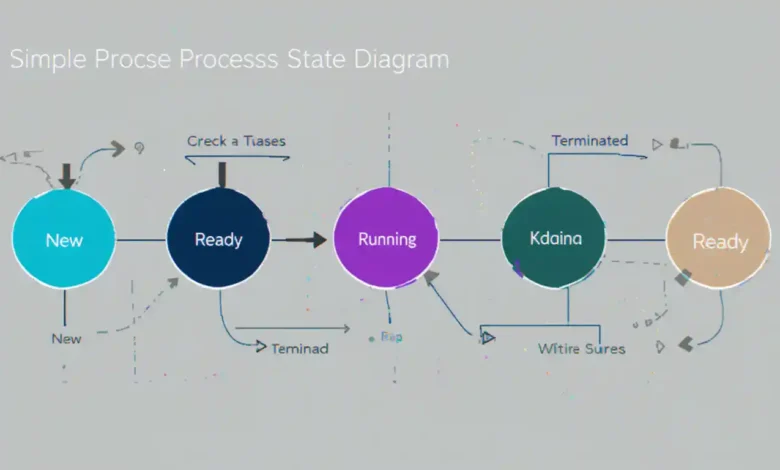Understanding Process State Diagrams: A Comprehensive Guide

Introduction
In the realm of computer science and operating systems, understanding the intricacies of the process state diagram is paramount. A process state diagram visualizes the various states a process can exist in throughout its lifecycle within a computing environment. This guide aims to delve into the depths of process state diagrams, elucidating their significance, structure, and practical applications.
The Basics of Process State Diagrams
At its core, a process state diagram provides a systematic representation of the different states a process transitions through during its execution within an operating system. From initialization to termination, the process state diagram encapsulates every phase of a process’s existence.
Components of a Process State Diagram
A typical process state diagram comprises several essential components, including states, transitions, and events. States represent the distinct phases of a process, transitions denote the movements between these states, and events trigger these transitions, thereby influencing the process’s behavior.
Process States
Central to comprehending process state diagrams is a grasp of the various states a process can inhabit. These states typically include the ‘new,’ ‘ready,’ ‘running,’ ‘waiting,’ and ‘terminated’ states, each signifying different stages of a process’s lifecycle.
Transitions and Events in Process State Diagrams
Transitions between states occur in response to specific events or conditions within the system. Events such as I/O requests, interrupts, or scheduling decisions prompt these transitions, dynamically shaping the flow of processes within the operating system environment.
The Role of Schedulers in Process State Diagrams
Schedulers play a pivotal role in orchestrating the movement of processes between states within a system. Through intelligent scheduling algorithms, schedulers determine the optimal allocation of system resources, thereby optimizing performance and throughput.
Real-World Applications of Process State Diagrams
Process state diagrams find extensive utility across various domains, including operating system design, software development, and system administration. By providing a visual representation of process behavior, these diagrams aid in system analysis, troubleshooting, and performance optimization.
Challenges and Considerations
Despite their utility, process state diagrams pose certain challenges, particularly in complex systems with numerous concurrent processes. Managing state transitions, handling synchronization issues, and ensuring system stability are among the key considerations in utilizing process state diagrams effectively.
Advanced Concepts and Extensions
Beyond the fundamental concepts, advanced extensions of process state diagrams incorporate features such as multithreading, interprocess communication, and parallel processing. These extensions enrich the descriptive power of process state diagrams, enabling a more comprehensive portrayal of system dynamics.
Tools and Techniques for Creating Process State Diagrams
Several software tools and techniques facilitate the creation and analysis of process state diagrams. From specialized diagramming software to scripting languages, a plethora of resources exist to aid in visualizing and interpreting process behavior within a computing environment.
Best Practices for Utilizing Process State Diagrams
To harness the full potential of process state diagrams, adherence to best practices is essential. This includes maintaining consistency in diagram notation, documenting event-triggered transitions, and periodically revising diagrams to reflect system changes accurately.
Conclusion
In essence, process state diagrams serve as invaluable tools for understanding the intricate dynamics of processes within computer systems. By providing a visual representation of process states, transitions, and events, these diagrams facilitate system analysis, troubleshooting, and optimization, thus playing a pivotal role in modern computing environments.
FAQs
- What is the significance of process state diagrams in operating systems?
Process state diagrams offer a structured visualization of process behavior within operating systems, aiding in system analysis, troubleshooting, and performance optimization.
- How do events trigger transitions in process state diagrams?
Events such as I/O requests, interrupts, or scheduling decisions prompt transitions between states in process state diagrams, influencing the behavior of processes within the system.
- What challenges do process state diagrams pose in complex systems?
Managing state transitions, handling synchronization issues, and ensuring system stability are among the key challenges in utilizing process state diagrams effectively in complex computing environments.
- Can process state diagrams represent multithreaded processes?
Yes, advanced extensions of process state diagrams can incorporate features such as multithreading, enabling a more comprehensive portrayal of system dynamics.
- What are some recommended tools for creating process state diagrams?
Various software tools and techniques, including specialized diagramming software and scripting languages, facilitate the creation and analysis of process state diagrams in computing environments.




